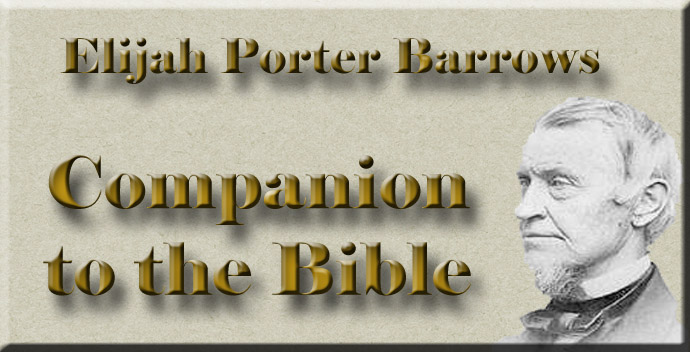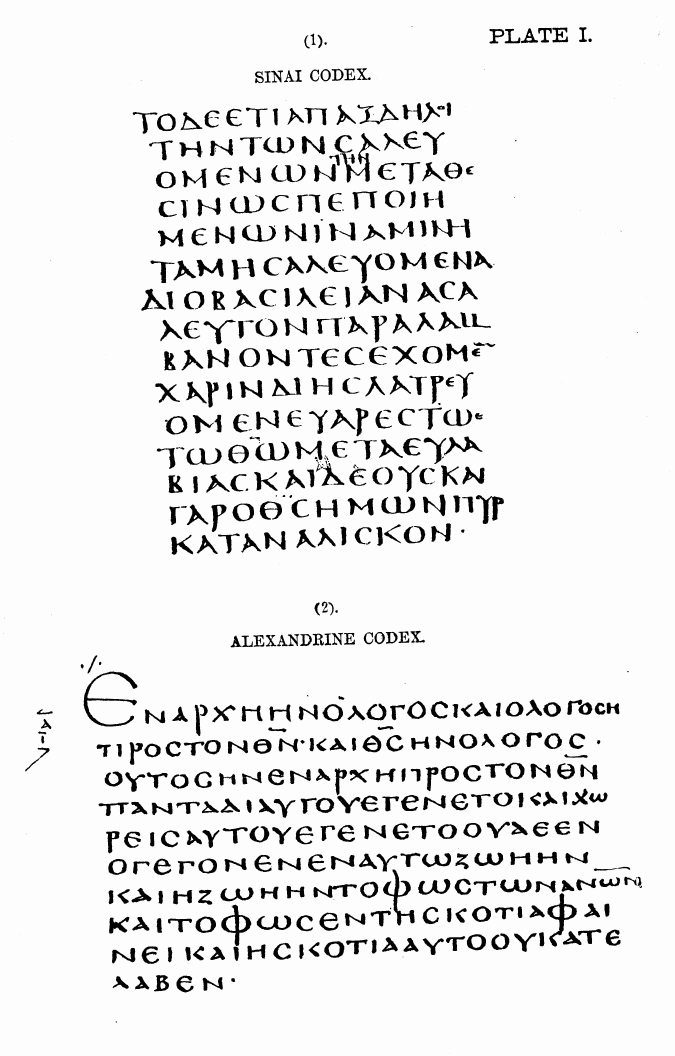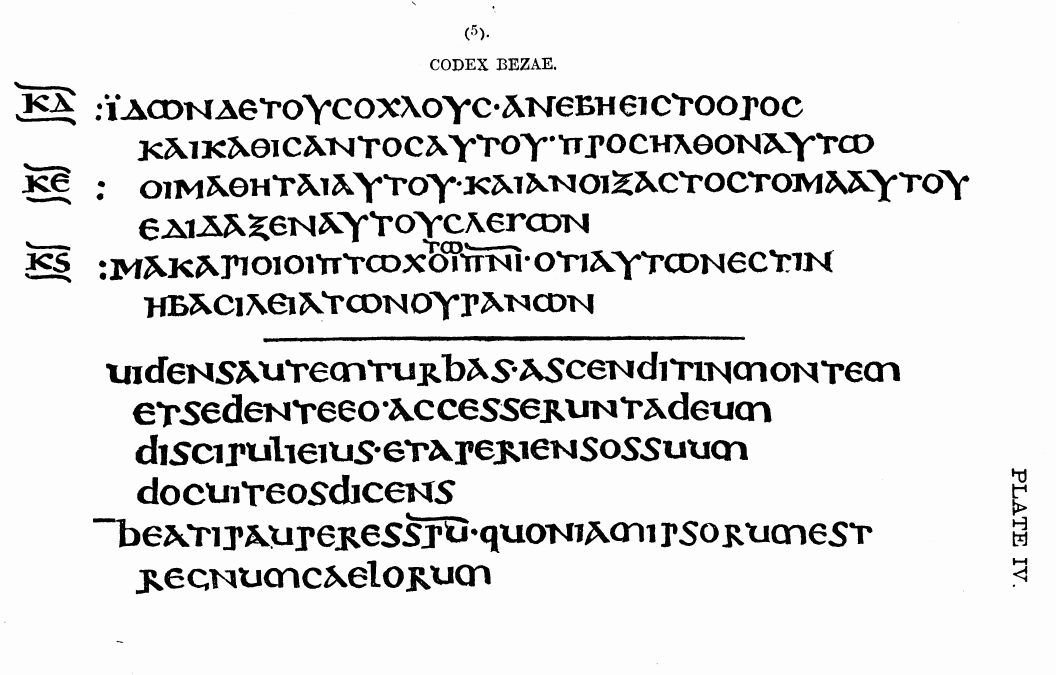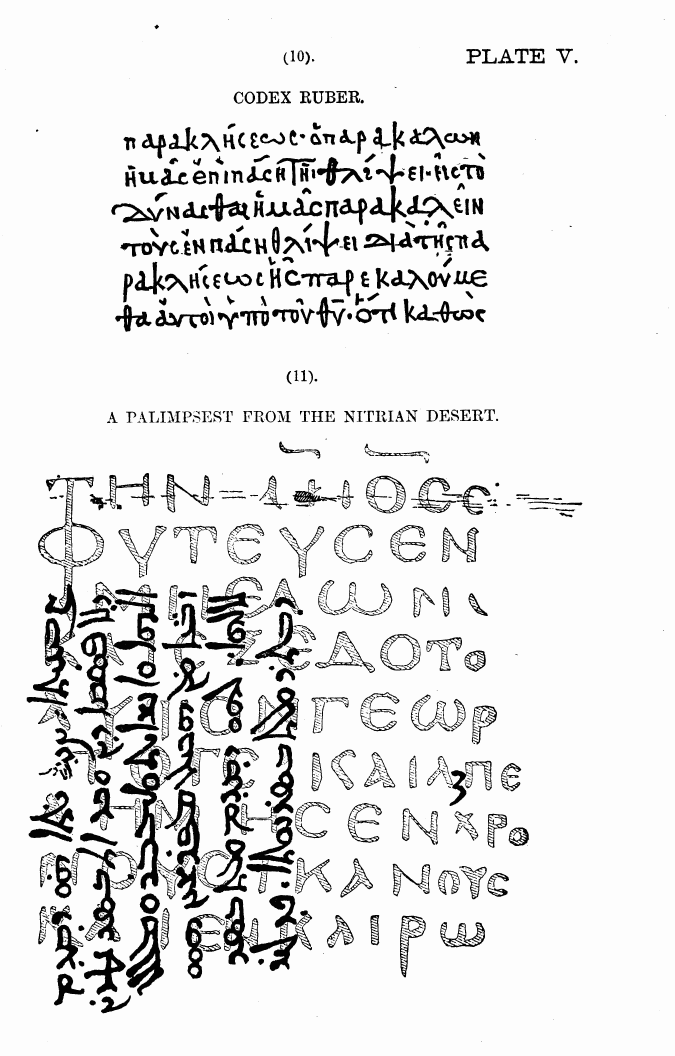
Companion to the Bible
By Elijah Porter Barrows
FAC-SIMILES OF ANCIENT NEW TESTAMENT MANUSCRIPTS, TO ILLUSTRATE CHAPTER XXVI.
|
Most of the following specimens of ancient manuscripts are taken from Scrivener's Introduction to the Criticism of the New Testament. No. (1) is from Tischendorf's Novum Testamentum Gręce ex Sinaitico Codice; Nos. (2) and (11) from Smith's Dictionary of the Bible; and No. (5) from Horne's Introduction, Vol. IV. No. (1). PLATE I. Sinai Codex, Century IV. Heb. 12:27-29. Notice the occasional use of very small letters. In line 3 the article [την] is inserted by correction in its proper place, while it is left standing where it should not at the beginning of line 2. No. (2). PLATE I. Alexandrine Codex, Century V. Jno. 1:1-5. In the margin stands the first Ammonian section (A), and under it the tenth Eusebian canon (I). No. (3). PLATE II. Vatican Codex, Century IV. Psa. 1:1, 2 and part of verse 3; called by Scrivener "a tolerable fac-simile." No. (4). PLATE III. Codex Ephraemi, palimpsest of Century V. 1 Tim. 3:16, and end of verse 15. The heavier upper writing in two columns (cursive) is a translation from Ephraem the Syrian. The paler underneath is the Greek text. No. (5). PLATE IV. Codex Bezae, Century VI. Matt. 5:1-3. From the type cast for Kipling's edition, which give a good idea of the manuscript. It is bilingual, the Greek and Latin stichometrically written and on opposite pages. In the present specimen the Latin is placed below the Greek. On the left margin of the Greek are the Ammonian sections. No. (6). PLATE II. Codex Purpureus, Century VI. Part of Jno. 15:20. In the margin the Ammonian section 139 ([Greek: RATh]), and under it the third Eusebian canon (ΡΛΘ). No. (7). PLATE II. Codex Laudianus, Century VI. Part of Acts 20:28. Bilingual and stichometrically written, the Latin on the left and the Greek on the right. No. (8). PLATE III. Codex Monacensis, Century X. Luke 7: end of verse 25 and beginning of verse 26. No. (9). PLATE III. Codex Basilensis (cursive), Century X. Matt. 15:1, and part of verse 2. No. (10). PLATE V. Codex Ruber (cursive, in bright red ink), Century X. 2 Cor. 1:4, with end of verse 3, and beginning of verse 5. No. (11). PLATE V. Part of Luke 20:9, 10, from a fragmentary Palimpsest of century VI., brought in 1847 from the Nitrian desert, and now in the British Museum, add. 17,211. It is covered by Syrian writing of Century IX. or X.
|
|||||||||||||||
 |
 |
||||||||||||||
|
|
|||||||||||||||
-
Site Navigation
 Home
Home What's New
What's New Bible
Bible Photos
Photos Hiking
Hiking E-Books
E-Books Genealogy
Genealogy Profile
Free Plug-ins You May Need
Profile
Free Plug-ins You May Need
 Get Java
Get Java.png) Get Flash
Get Flash Get 7-Zip
Get 7-Zip Get Acrobat Reader
Get Acrobat Reader Get TheWORD
Get TheWORD




